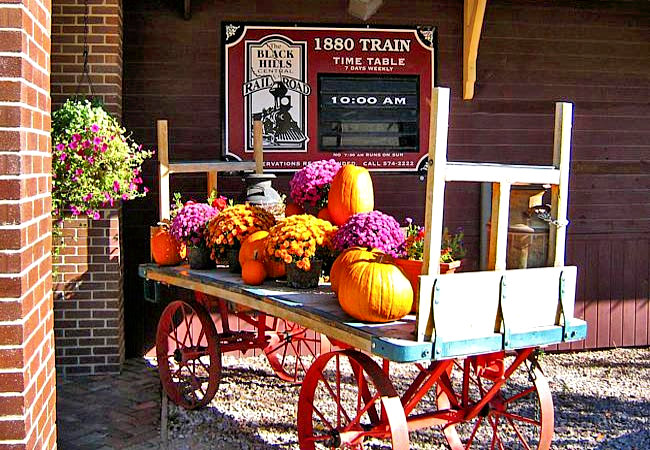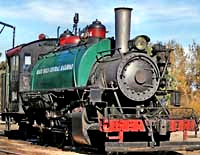|
Scenic USA - South Dakota The 1880s Train |

| Photos by Terri Prepelka |
Some of the first Lakota Sioux  in today's southwest South Dakota were quick to call their new home Paha Sapa (hills black). The Black Hills offered a bounty of food, substantial shelter, and a splendid forest, an area which was much different from the surrounding treeless Great Plains. A member of Lt. Colonel George A. Custer's exploration party touched off a late 1870s gold rush, changing the lives of the Native population forever. Major gold finds in Deadwood and Lead prompted clashes between local Natives and miners, often cited as the Red Cloud War. After the Great Sioux War ended and the Sioux Reservation was established, Black Hills mining operations called for the area's first narrow gauge railway.
in today's southwest South Dakota were quick to call their new home Paha Sapa (hills black). The Black Hills offered a bounty of food, substantial shelter, and a splendid forest, an area which was much different from the surrounding treeless Great Plains. A member of Lt. Colonel George A. Custer's exploration party touched off a late 1870s gold rush, changing the lives of the Native population forever. Major gold finds in Deadwood and Lead prompted clashes between local Natives and miners, often cited as the Red Cloud War. After the Great Sioux War ended and the Sioux Reservation was established, Black Hills mining operations called for the area's first narrow gauge railway.
By the mid 1900s, American steam locomotives were being replaced with modern diesel powered engines.  Large diesel units had completely taken over the Black Hills lines. All that changed in 1957 when Klondike Casey, pulling two open air cars, chugged up the steep Tin Mill Hill to Oblivion. This event marked a return of steam-powered iron horses on this five mile run.
Large diesel units had completely taken over the Black Hills lines. All that changed in 1957 when Klondike Casey, pulling two open air cars, chugged up the steep Tin Mill Hill to Oblivion. This event marked a return of steam-powered iron horses on this five mile run.
Today, the 1880 Train is led by three vintage steam engines, creating an unforgettable experience for Black Hills visitors. The Black Hills Central Railroad offers daily runs from Rapid City to Keystone, South Dakota, using three distinctive Baldwin Locomotive Works engines. The old reliable Number 7, with a 2-6-2 wheel configuration, was built in 1919. The Black Hills Central Number 110, a 2-6-6-2t, is one of the rare articulating Mallets in service worldwide. The 1926 Baldwin Locomotive Works Number 104, rounding out the steam-powered fleet, has remained in service for the last 82 years.
Area Map

|
More Area Attractions |
|
Copyright © 2021 Benjamin Prepelka
All Rights Reserved
